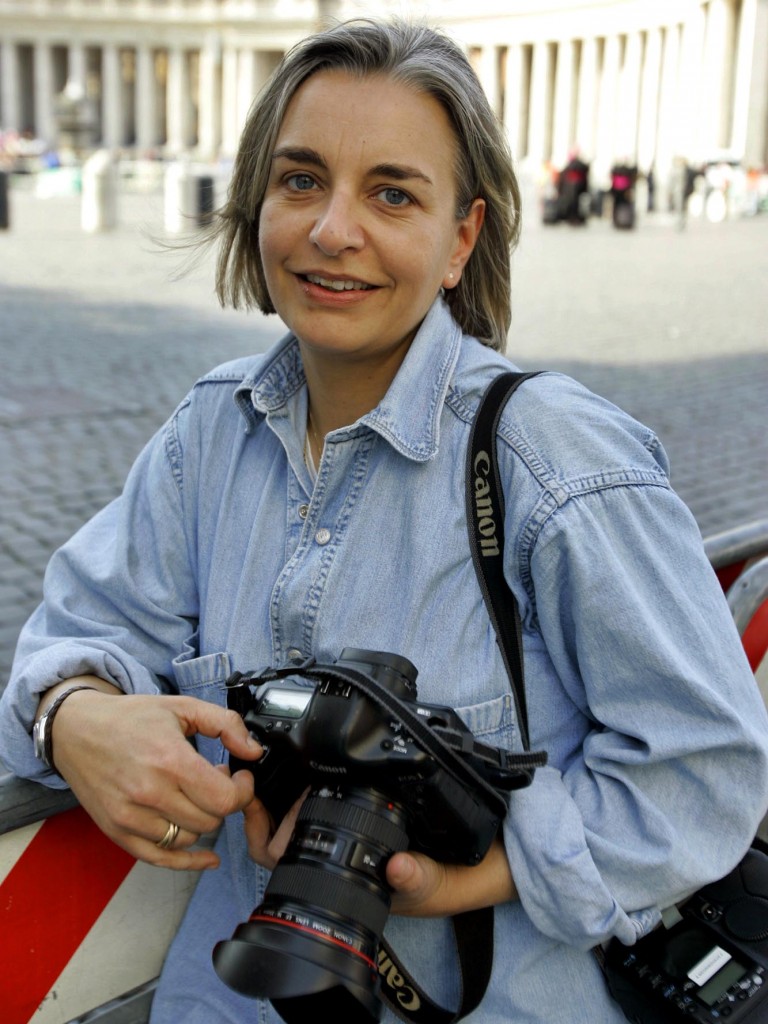
Dear Blog Readers — By now most of you probably know about the attack last Friday in Afghanistan on two women working for the Associated Press, killing Pulitizer-Prize winning photographer Anja Niedringhaus and seriously wounding veteran correspondent Kathy Gannon. It has taken me a few days to want to write a post and even now I am not sure what to say. These women are my heroines. They are the people I admire more than anyone else in the business. They go to places where few other journalists want to go, they try to minimize the risks and over and over again tell stories to the rest of the world that no one would know about otherwise. The AP does not pay huge, super-star salaries– people like Anja and Kathy do it out of passion for journalism, a desire to be there, to see for themselves, a yearning to tell the story to the rest of the world with pictures and words. The world needs more journalists like Anja and Kathy. Anja’s death is a huge loss to the AP and to the world of journalism. My heart goes out to her family. My heart also goes out to Kathy as she struggles to recover from her injuries and the loss of her friend.
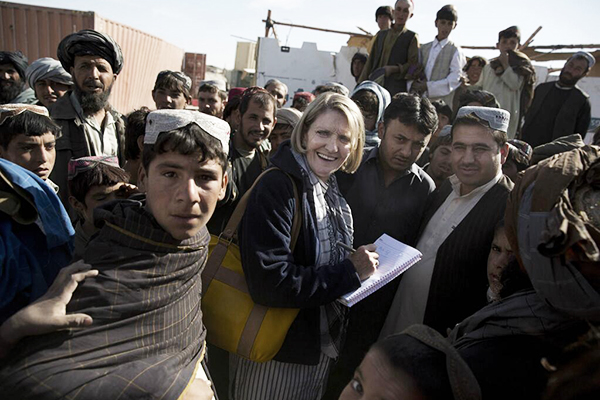
AP Executive Editor Kathleen Carroll sent all of us AP staffers the following message:
“Kathy has been stabilized and we are seeking additional medical attention for her and are optimistic for her recovery….
Kathy is a resilient soul, upbeat and tough all in the same package. She loves Afghanistan, a place she has covered for three decades. Those of you fortunate enough to have spent time with Kathy know the sound of that husky voice as she tells stories that always end with her looking innocently wide-eyed, as if she cannot believe the adventures she has just described. You also know how much Pakistan and Afghanistan are a part of her heart.
She and Anja were a great team, comrades in coverage and good cooking and good friendship … the first journalists to embed with the Afghan National Army … brilliant chroniclers of the people and events and wonderful human beings.
Anja’s death is a shattering loss for the AP family and for the many people around the world who knew and loved her. Much has been said already about her joyful nature and that amazing laugh. She was magical … people just wanted to be around her. She made everything brighter, more fun, more alive.
Which is not to say that Anja didn’t have a serious side. Woe be unto you if you were sloppy or late or were giving anything but 110 percent; she’d snap you back into line right then and there. Then have you laughing about something 15 minutes later.”
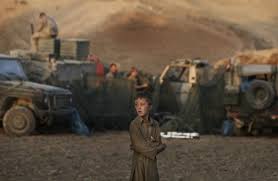
Below is the AP story on what happened.
KABUL, Afghanistan (AP) — An Afghan police commander opened fire Friday on two Associated Press journalists, killing Pulitzer Prize-winning photographer Anja Niedringhaus and wounding veteran correspondent Kathy Gannon — the first known case of a security insider attacking journalists in Afghanistan.
The shooting was part of a surge in violence targeting foreigners in the run-up to Saturday’s presidential elections, a pivotal moment in Afghanistan’s troubled recent history that promises to be the nation’s first democratic transfer of power.
Niedringhaus, 48, who had covered conflict zones from the Balkans in the 1990s to Iraq, Libya and Afghanistan, died instantly of her wounds.
Gannon, 60, who for many years was the news organization’s Afghanistan bureau chief and currently is a special correspondent for the region, was shot three times in the wrists and shoulder. After surgery, she was in stable condition and spoke to medical personnel before being flown to Kabul.
Niedringhaus and Gannon had worked together repeatedly in Afghanistan since the 2001 U.S.-led invasion, covering the conflict from some of the most dangerous hotspots of the Taliban insurgency. They often focused on the war’s impact on Afghan civilians, and they embedded several times with the Afghan police and military, reporting on the Afghan government’s determination to build up its often ill-equipped forces to face the fight against militants.
Gannon, who had sources inside the Taliban leadership, was one of the few Western reporters allowed into Afghanistan during the militant group’s rule in the 1990s.
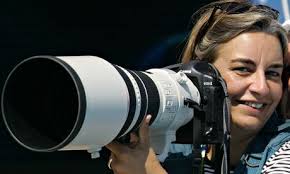
The two journalists were traveling in a convoy of election workers delivering ballots in the eastern city of Khost, under the protection of Afghan security forces. They were in their own car with a translator and an AP Television News freelancer waiting for the convoy to move after arriving at the heavily guarded security forces base in eastern Afghanistan.
A unit commander identified by authorities as Naqibullah walked up to the car, yelled “Allahu Akbar” — God is Great — and fired on them in the back seat with his AK-47, said the freelance videographer, who witnessed the attack, which left the rear door of the car riddled with bullet holes. The officer then surrendered to the other police and was arrested.
While there have been repeated cases in recent years of Afghan police or military personnel opening fire on and killing international troops working with the country’s security forces, Friday’s attack was the first known insider shooting of journalists.
Past attacks have been carried out by suspected Taliban infiltrators or Afghans who have come to oppose the foreign presence in the country. At their worst, in 2012, there was an average of nearly one a week, killing more than 60 coalition troops and prompting NATO to reduce joint operations with Afghan forces.
Taliban spokesman Zabihullah Mujahid denied responsibility for Friday’s attack. Khost Provincial Police Chief Faizullah Ghyrat said the 25-year-old attacker confessed to the shooting and told authorities he was from Parwan province, northwest of Kabul, and was acting to avenge the deaths of family members in a NATO bombing there. The claim could not be corroborated and officials said they were still investigating the shooter’s background.
Ghyrat said the police commander told authorities he had seen the journalists, decided to act, and then demanded the assault rifle from one of his subordinates.
The shooting came on the eve of Afghanistan’s elections for a new president and provincial councils. With international combat forces preparing to withdraw by the end of this year, the country is so unstable that the very fact the vote is being held has been touted as one of the few successes in outgoing President Hamid Karzai’s tenure.
The Taliban have vowed to disrupt the vote and have stepped up violence in recent weeks, including increased attacks on civilian targets in Kabul and the killings of a Swedish journalist and an Afghan journalist for the French news agency Agence France-Presse.
Karzai said in a statement that he “grieved” Niedringhaus’ death and wished a quick recovery for Gannon. He also ordered an investigation into the shooting.
In a memo to staff, AP President Gary Pruitt remembered Niedringhaus as “spirited, intrepid and fearless, with a raucous laugh that we will always remember.”
“Anja is the 32nd AP staffer to give their life in pursuit of the news since AP was founded in 1846,” he wrote. “This is a profession of the brave and the passionate, those committed to the mission of bringing to the world information that is fair, accurate and important. Anja Niedringhaus met that definition in every way.”
Niedringhaus joined the AP in 2002, and while based in Geneva worked throughout the Middle East as well as Afghanistan and Pakistan. In 2005, she was part of the AP team that won the Pulitzer Prize for breaking news photography for coverage of Iraq, and was awarded the Courage in Journalism Award from the International Women’s Media Foundation, among many journalistic honors. In 2006-07, she studied at Harvard University under a Nieman Fellowship.
“What the world knows about Iraq, they largely know because of her pictures and the pictures by the photographers she raised and beat into shape,” said AP photographer David Guttenfelder. “I know they always ask themselves, ‘What would Anja do?’ when they go out with their cameras. I think we all do.”
“She truly believed in the need to bear witness,” said Santiago Lyon, AP vice president and director of photography.
Niedringhaus captured what war meant to her subjects: an Afghan boy on a swing holding a toy submachine gun, a black-clad Iraqi giving a bottle to her baby as she waits for prisoners to be released, a U.S. Marine mourning the loss of 31 comrades.
Others showed life going on among the killing: a Canadian soldier with a sunflower stuck in his helmet, a young girl testing her artificial limbs, while her sister teasingly tries to steal her crutches, a bearded Afghan man and grinning boy listening to music on an iPod borrowed from German soldiers.
At an exhibit of her work in Berlin in 2011, Niedringhaus said: “Sometimes I feel bad because I can always leave the conflict, go back home to my family where there’s no war.”
Niedringhaus started her career as a freelance photographer for a local newspaper in her hometown in Hoexter, Germany, at age 16. She worked for the European Press Photo Agency before joining the AP and had published two books.
Gannon, a Canadian journalist based in Islamabad, has covered Afghanistan and Pakistan for the AP since the mid-1980s. A former Edward R. Murrow fellow at the Council on Foreign Relations in New York, she is the author of a book on the country, “I Is for Infidel: From Holy War to Holy Terror: 18 Years Inside Afghanistan.” She also was awarded the Courage in Journalism Award from the International Women’s Media Foundation, in 2002.
After Friday’s attack, Gannon underwent surgery in Khost and was said to be stable. She was then flown to Kabul for further treatment.
Niedringhaus drew praise Friday from battlefields to the White House. She was honored at a United Nations briefing, and German Chancellor Angela Merkel’s spokesman, Steffen Seibert, tweeted condolences. White House spokesman Josh Earnest said she and Gannon were in President Obama’s thoughts and prayers.
In Washington, Pentagon spokesman Col. Steve Warren condemned “this senseless act of violence against these brave professionals covering this important political transition in Afghanistan.”
The Committee to Protect Journalists said the loss of Niedringhaus and the wounding of Gannon “reflect the heightened dangers of reporting from Afghanistan.”
“As pre-election violence mounts, Afghanistan has become a dangerous assignment on par with the height of the Iraq war or the current situation in Syria,” said Bob Dietz, CPJ’s Asia program coordinator.
The militants have increasingly been targeting Westerners.
Nils Horner, a 51-year-old Swedish journalist who had worked for Swedish Radio since 2001 as a foreign correspondent, was killed by a shot in the head as he was reporting on Afghanistan’s election in Kabul in early March. An extremist Taliban splinter group later claimed responsibility.
On March 21, four gunmen opened fire in a crowded restaurant frequented by foreigners in the Serena Hotel in Kabul, killing nine people. Among the dead was Sardar Ahmad, a respected 40-year-old Afghan journalist with AFP. His wife and two of their children also were killed, while their nearly 2-year-old son was badly wounded.
See Anja in her own words
See also Kimberly Dozier’s article Sisters in Danger
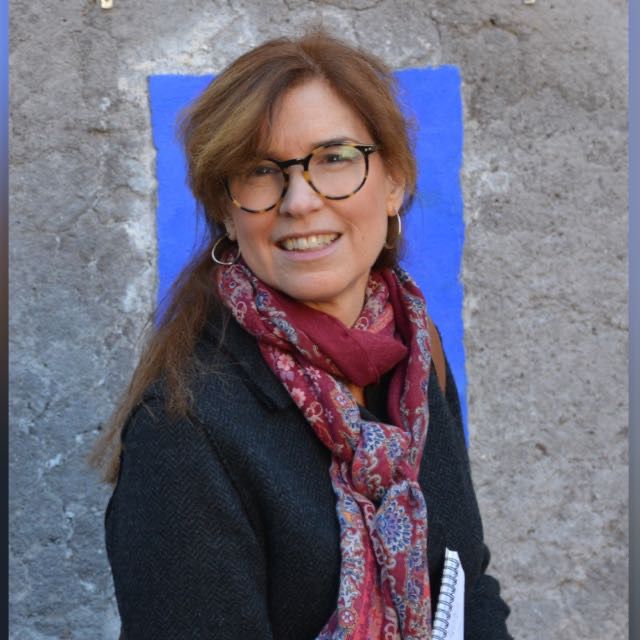
This has been a shocking event. You have, I believe, written about Niedringhaus before, and I was stunned by her death. So cold-blooded, and so stupid, for without their reports there will be far less interest in and sympathy for the Afghans in this election. For Americans, it confirms the ‘get out, get out’ mentality, and I guess that works for the Taliban. But it wasn’t the Taliban who shot these women.
We need coverage of the whole world, Trisha. We need to understand what is going on in Rome as much as what is going on in Afghanistan. You, too, are a heroine, you, too, have great courage in exploring the truth underneath the facade of the most elaborate facade in the world – Vatican Europe.
It is indeed shocking and we need more women like them. When I started out as a journalist I wanted to be like them working in hot-spots around the globe. I did that briefly in the Philippines and a few other places, but I also wanted to have a family and that kind of life is nearly impossible to reconcile with children. I don’t think I am particularly heroic in my AP job in Rome, but my Mamma job is requiring some serious courage these days. One just never knows where the challenges are going to come from in life.
Thanks for this tribute, Trisha. These were two dedicated journalists who never flinched from reporting honestly. The AP account indicates this might have been another case of “blowback”– against a “Western” target: The shooter claimed he was”acting to avenge the deaths of family members in a NATO bombing.”
Tom, I think as someone who has been in war zones and hot spots around the globe as a journalist you can appreciate these two women more than most people. They were/are the best of the best– they were not seeking their thrills and andrenaline highs on the front-lines, they covered wars for decades, they new the risks and they new how to take precautions. As you say, the AP report indicates it could have been a “blow-back” killing (I am not familiar with that term, but it is clear enough) to avenge the deaths of relatives in a NATO attack. Tragic all ways around. Thanks for your comment.
I always marvel at the bravery of the reporters and photographers who bring us the news, particularly women who go to places like Afghanistan. We were all sorry, but sadly not shocked, to hear this news. I am terribly sorry for the loss of your colleague. I hope Ms. Gannon makes a full recovery. The world is a cruel place. I do wonder what will happen ultimately in Afghanistan. So much blood and treasure has been lost there.
I also marvel at these women and a little bit of me would like to be one of them. Their journalism really makes a difference in the world. I also admire your friend who died recently, Mike O’Connor — he was also incredibly courageous.
Lovely words Trisha. The world is fortunate for their time in it and on it!
Thank you Gwen! I agree with you.
‘Collateral damage’; ‘Stuff happens’. The West is always casual or dismissive of the lives of those against whom it conducts its illegal wars. Those wars for resources and trade/pipeline routes are conducted on a scale that reduces human beings to nothing more than ‘Bug splats!’ (to quote some drone pilot) and it is little wonder that the same callous indifference to the life of any Westerner is reciprocated! Trisha, the death and injury of your colleagues is a tragedy made all the more personal for being close to home and they are deeply saddening. They are not ‘stupid’ or ‘pointless’ they are retribution and revenge for the murder and mayhem inflicted on millions around the world by the war criminals in the White House and Downing Street. When FUKUS/NATO stop their evil, illegal colonial wars, reporters, along with the innocents of Afghanistan, Syria, Yemen, Somalia, Ukraine, Libya and many countries across Africa will cease to be gunned down or blown to bits.
Alan, you are probably right. I had never heard the term “bug splats” before. Horrible. Also I had never heard the expression “blowback” that my friend Tom mentioned in a comment above. What can I say? I mourn the loss of a colleague and the injury of another. I believe journalists like the two of them are key to revealing some of the terrible killings and abuses inflicted by the West on Afghanistan that you are talking about.
A sad story. We have lost a remarkable woman who knew the dangers but still wanted us to know the story. My hope is for the recovery of Ms. Gannon so she can return to what she loves.
Thanks Joan — Kathy Gannon is one tough woman and I am sure she will be back. We all wish her a quick recovery.
So sad. Those people hate us. They are vengeful and have little respect for human life, especially female human life.
It is sad. I don’t think all the Afghan people hate us, it is just a terrible situation there. I do think that it must be one of the worst places in the world to be a woman.
Trisha, I’m so sorry for your loss. Please pass on my condolences to the rest of the AP family as well. Also, my well wishes for Kathy on her road of recovery.
Thank you Pauline, I will do that.
sad sad words and a beautiful tribute xxx
Thank you Lisa.